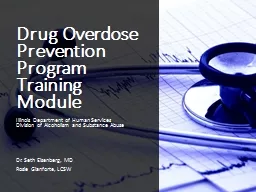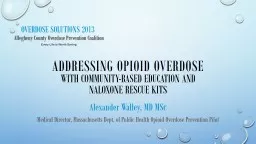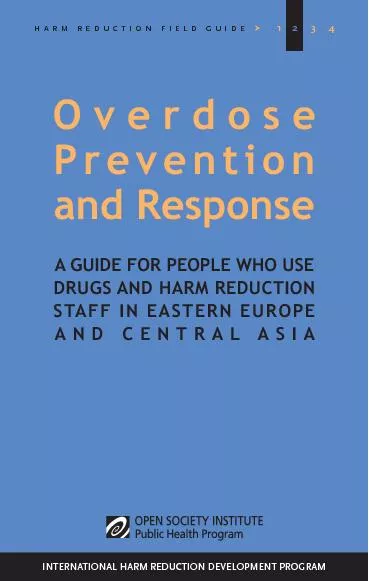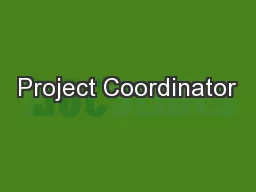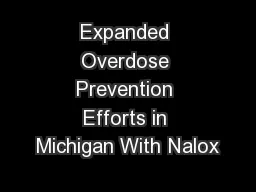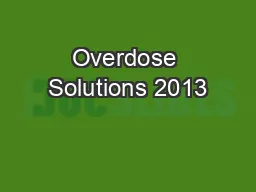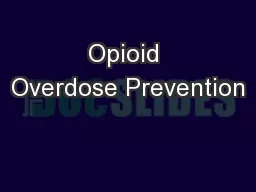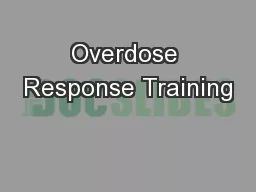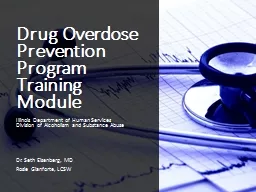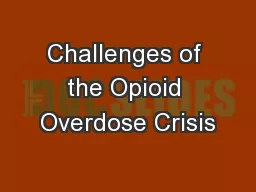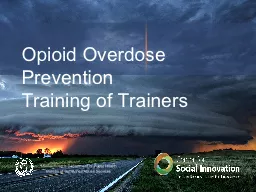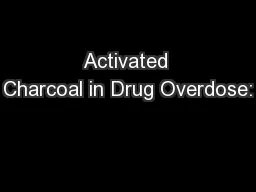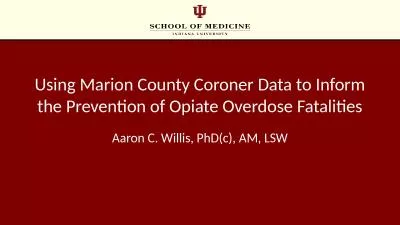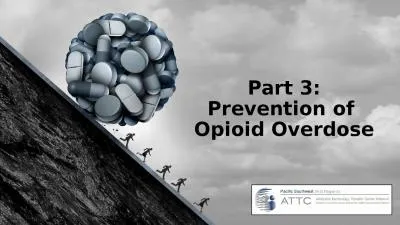PPT-Drug Overdose Prevention Program
Author : test | Published Date : 2018-01-19
Training Module Illinois Department of Human Services Division of Alcoholism and Substance Abuse Dr Seth Eisenberg MD Rosie Gianforte LCSW Overview of the HeroinOpiate
Presentation Embed Code
Download Presentation
Download Presentation The PPT/PDF document "Drug Overdose Prevention Program" is the property of its rightful owner. Permission is granted to download and print the materials on this website for personal, non-commercial use only, and to display it on your personal computer provided you do not modify the materials and that you retain all copyright notices contained in the materials. By downloading content from our website, you accept the terms of this agreement.
Drug Overdose Prevention Program: Transcript
Training Module Illinois Department of Human Services Division of Alcoholism and Substance Abuse Dr Seth Eisenberg MD Rosie Gianforte LCSW Overview of the HeroinOpiate Problem Identifying Opioid Overdoses. Legislative Breakfast . 2014. Mishka Terplan MD MPH FACOG . Diplomate. ABAM. Medical Director, Behavioral Health System Baltimore. . Overdose in the US. CDC 2011. Overdose in the US. What is an opioid overdose?. Addressing Opioid Overdose . with . Community-based Education . and . Naloxone . Rescue Kits. Alexander Walley, MD MS. c. Medical . Director, Massachusetts . Dept. of Public . Health Opioid . Overdose Prevention Pilot. The approach to overdose prevention and response described in this guide book is based on information, techniques, and medications that have been used in modern medicine for decades. The philosophy of Overdose . Prevention . Project, . Prevention . Point . Pittsburgh. Alice Bell, LCSW . Prophylactic Prescription of . Naloxone to Prevent Fatal . Opioid Overdose. July 2012. Overdose Prevention Project. Steve Alsum . The Grand Rapids Red Project. steve@redproject.org. (616) 456-9063. Introduction. Overdose . Epi. Naloxone Distribution: Core Components. Distribution Models. Community Based. Law Enforcement. Overdose Data for Allegheny County. Jennifer Janssen. Manager Toxicology Laboratory. Allegheny County Office of the Medical Examiner. ACOME. The Overdose Problem in Allegheny County. 2008-2012. Allegheny County. Training . Massachusetts Department of Public Health. Bureau of Substance Abuse Services. Agenda. Massachusetts Department of Public Health. Bureau of Substance Abuse Services. Understanding Opioids. Dave Morgan, . RPh. Safe Prescribing . Consultant, Norfolk District Attorney’s Office. Daniel Muse, MD. Brockton Hospital. Sgt.. Brian Holmes & . Sgt.. Donna McNamara. Stoughton Police Department. Drug Overdose Prevention Program Training Module Illinois Department of Human Services Division of Alcoholism and Substance Abuse Dr. Seth Eisenberg, MD Rosie Gianforte , LCSW Overview of the Heroin/Opiate Problem Challenges of the Opioid Overdose Crisis Gloria Baciewicz MD Strong Recovery, Dept of Psychiatry, University of Rochester 2018 Challenges of the Opioid Overdose Crisis The changing nature of the opioid overdose crisis Training of Trainers. Massachusetts Department of Public Health. Bureau of Substance Abuse Services. Agenda. Massachusetts Department of Public Health. Bureau of Substance Abuse Services. Understanding Opioids. A Review. Presenters: Cheyenne Caldwell, Katelyn Corcoran, Haley Kirchner. Mentor: Dr. Dale Wurster, Ph.D. . . ACTIVATED. . CHARCOAL. Treatment of drug overdose for decades. . Not . very many studies on the reason for administration. Aaron C. Willis, PhD(c), AM, LSW. Acknowledgements. Marion County Coroner’s Office. Alfie Ballew, MBA, Chief Deputy Coroner. Presentation Overview. Study Protocol. Overall Findings. Opiate Overdose Trends from 2007 – 2014. Opioid Overdose Definition - World Health Organization. Due to their effect on the part of the brain that regulates breathing, opioids in high doses can cause respiratory depression and death. An opioid overdose can be identified by a combination of three signs and symptoms referred to as the “opioid overdose triad”, which are:.
Download Document
Here is the link to download the presentation.
"Drug Overdose Prevention Program"The content belongs to its owner. You may download and print it for personal use, without modification, and keep all copyright notices. By downloading, you agree to these terms.
Related Documents

